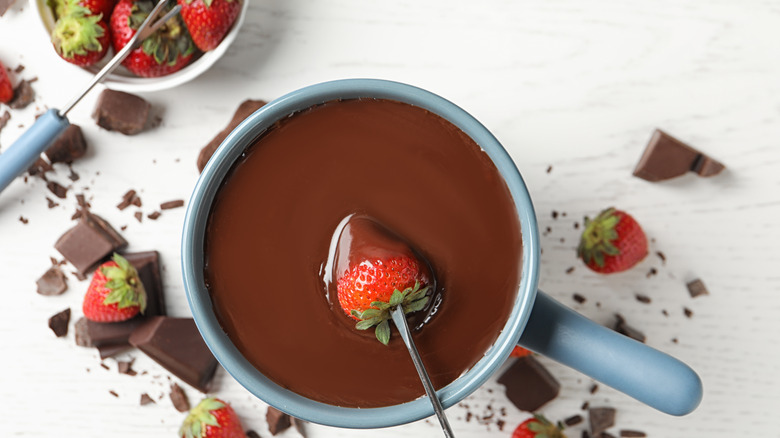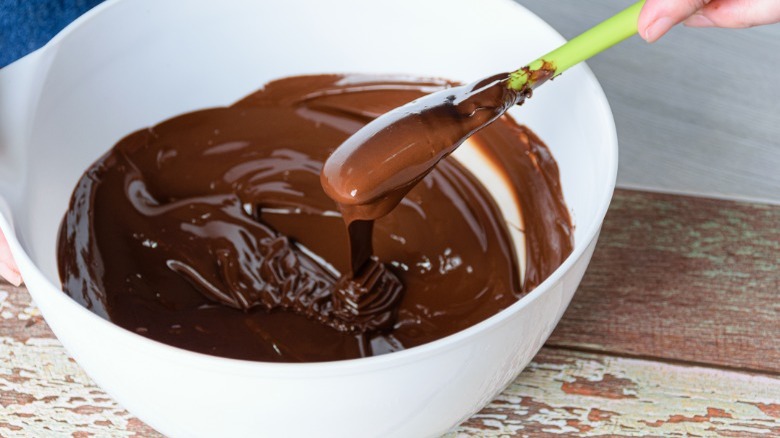Why You Should Think Twice About Melting Chocolate In A Glass Bowl
You might think you know the best ways to melt chocolate that work for you every single time, whether you're drizzling it or baking with the ingredient — but think again. There is actually a right and a wrong way to melt chocolate, and the method you've been told to use in your kitchen may actually be detrimental to your final product.
If you've been melting chocolate using a glass bowl, logically, it makes sense. When using a microwave or melting chocolate in a double-boiler over simmering water, glass is the safest material to use because it's not at risk of melting due to the heat. But, contrary to popular belief, chocolate should not be melted in a glass bowl, and should instead be melted in a plastic one.. Since glass bowls retain heat readily, extra heat can transfer to melted chocolate and undo its tempering. This can negatively impact its textural properties, making it less shiny and smooth than desired.
How to melt chocolate in a plastic bowl
Melting chocolate in a plastic bowl could at first seem risky; plastic usually doesn't hold up well when it encounters significant levels of heat. But that's where microwave-safe plastic bowls come into the picture. To melt your chocolate in the microwave, place it in a plastic bowl and heat it in 30-second intervals. In between each interval, stir the chocolate, and stop microwaving when it looks to be almost melted — this ensures that it will not burn.
It's essential to know that a plastic bowl is ideal for melting chocolate, but it's equally key to know that not all chocolate is good for melting. When melting chocolate, it's best to use the highest quality possible — for instance, Ghirardelli chunks. Additionally, it's easier to melt chocolate if it starts out in smaller pieces, so chocolate chips or wafers made specifically for baking work the best. The kind of chocolate you choose to melt depends on what you're making and your own personal tastes — some prefer the sweetness of milk chocolate, while others may go with a darker, more cacao-heavy variety.

